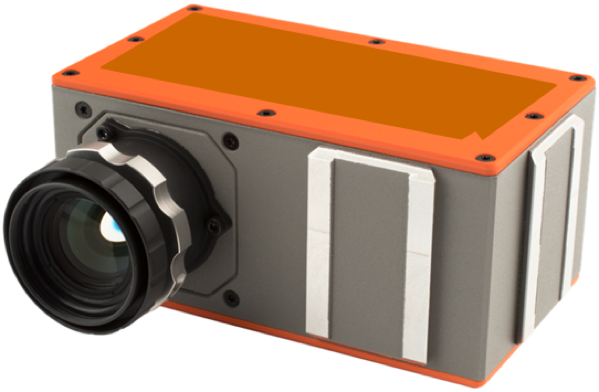Spectral imaging systems form and analyze the spectral radiance of each and every pixel in an image. The spectral radiance of an object is its reflected light intensity as a function of the wavelength.

Spectral imaging-systems analyze via the spectral radiances the molecular properties of an object. This is normally done by evaluating about 200 continuous wavebands between ultraviolet and long-infrared.
What is a spectral image?
A spectral image is a compilation of multiple images over the used wavelength, together this is called “The hypercube” See Fig 2.

From the hypercube we can now determine the fingerprint of a point/object in the image.
For every pixel/object in the spectral image, the spectral radiance has a unique characteristic across the different wavelengths and this is referred to as the ‘spectral fingerprint’ of that pixel/ object. It is the undisputable definition of the molecular properties of that pixel/object.

To determine if an object holds certain material (molecular properties); the known ‘fingerprint’ of the searched material is cross-referenced with the ‘fingerprint’ of the object studied. If the curves fit on each other we have undisputable proof of the material.
See fig 4.

Accuracy with spectral imaging
Spectral imaging provides much more information and leads to a vastly improved ability to classify objects in the image. Due to the high degree of accuracy spectral imaging is especially suited for:
- Medical tablet/product determinations
- Health determination of crop, seed, food-content, fungus detection,
- Food processing to determine ingredients and substances
- Material sorting based on material type
- Recycling systems to separate material
- Mining industry
- Remote sensing
How does spectral imaging work technichally?
The progress in sensor design and processing speed together with the construction of a so called ‘push-broom’ makes it possible to work with these high content hypercubes.
With the ‘push-broom’ technique the light is dispersed into different wavelengths by a prism (or grating) and then captured on the CCD sensor as a two dimensional image ( X, λ ). This allows the simultaneous acquisition of all the spectral wavebands as the scene is taken line by line together with a linear motion. With this technique the hypercube is built in one go. Together with the number of selected wavelengths there is a direct influence on the speed of the solution: the fewer wavelengths are selected for the check, the faster the evaluation can take place.

Example of a complete spectral image-system: grating spectrograph, camera and lens
Can Simac be of assistance with spectral imaging?
Spectral imaging has outgrown its laboratorial setup and is commercial a new and very interesting proposition. Simac is your partner if it comes to make a fit for use application in spectral analyses.

